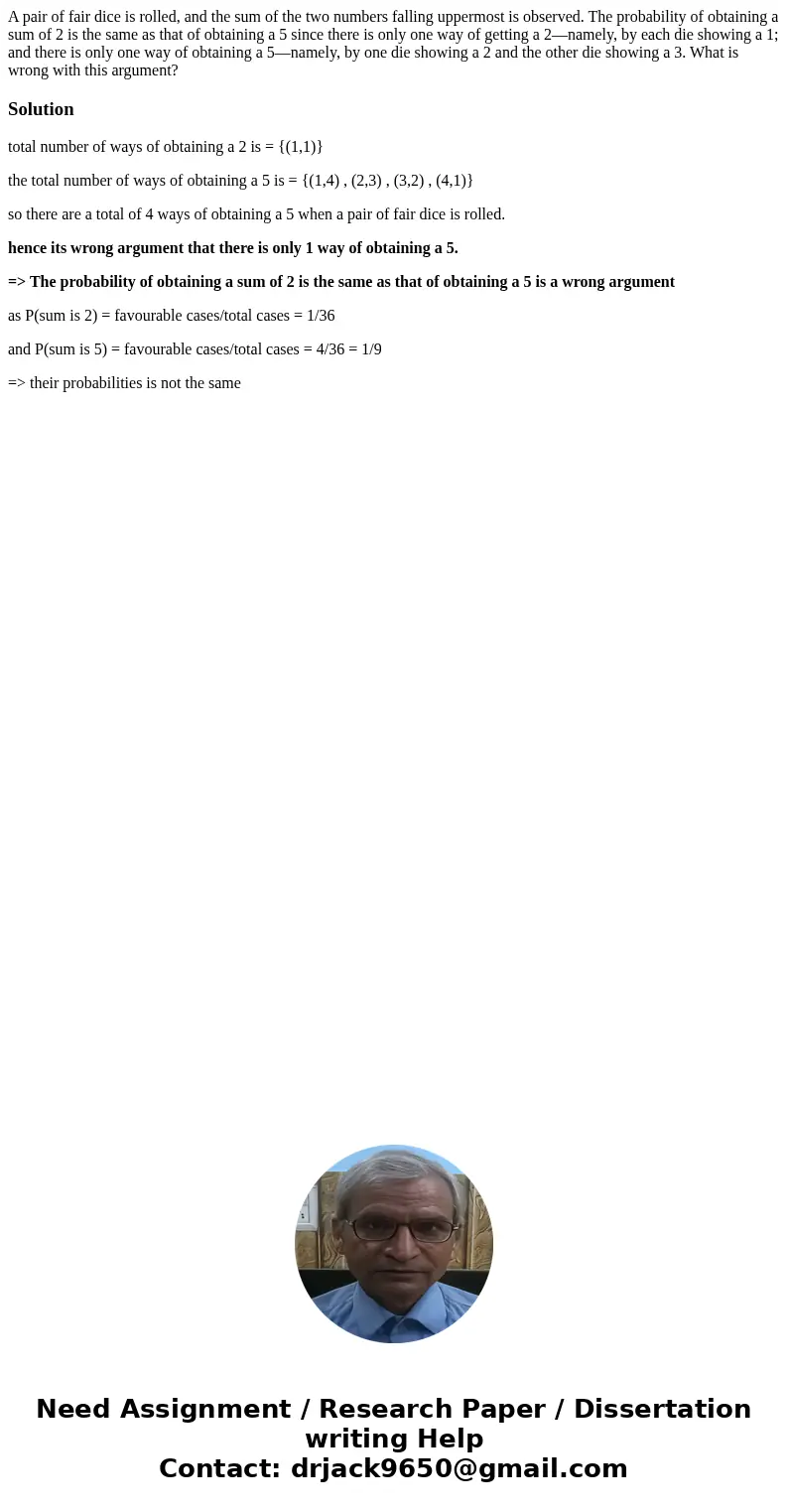A pair of fair dice is rolled and the sum of the two numbers
A pair of fair dice is rolled, and the sum of the two numbers falling uppermost is observed. The probability of obtaining a sum of 2 is the same as that of obtaining a 5 since there is only one way of getting a 2—namely, by each die showing a 1; and there is only one way of obtaining a 5—namely, by one die showing a 2 and the other die showing a 3. What is wrong with this argument?
Solution
total number of ways of obtaining a 2 is = {(1,1)}
the total number of ways of obtaining a 5 is = {(1,4) , (2,3) , (3,2) , (4,1)}
so there are a total of 4 ways of obtaining a 5 when a pair of fair dice is rolled.
hence its wrong argument that there is only 1 way of obtaining a 5.
=> The probability of obtaining a sum of 2 is the same as that of obtaining a 5 is a wrong argument
as P(sum is 2) = favourable cases/total cases = 1/36
and P(sum is 5) = favourable cases/total cases = 4/36 = 1/9
=> their probabilities is not the same

 Homework Sourse
Homework Sourse